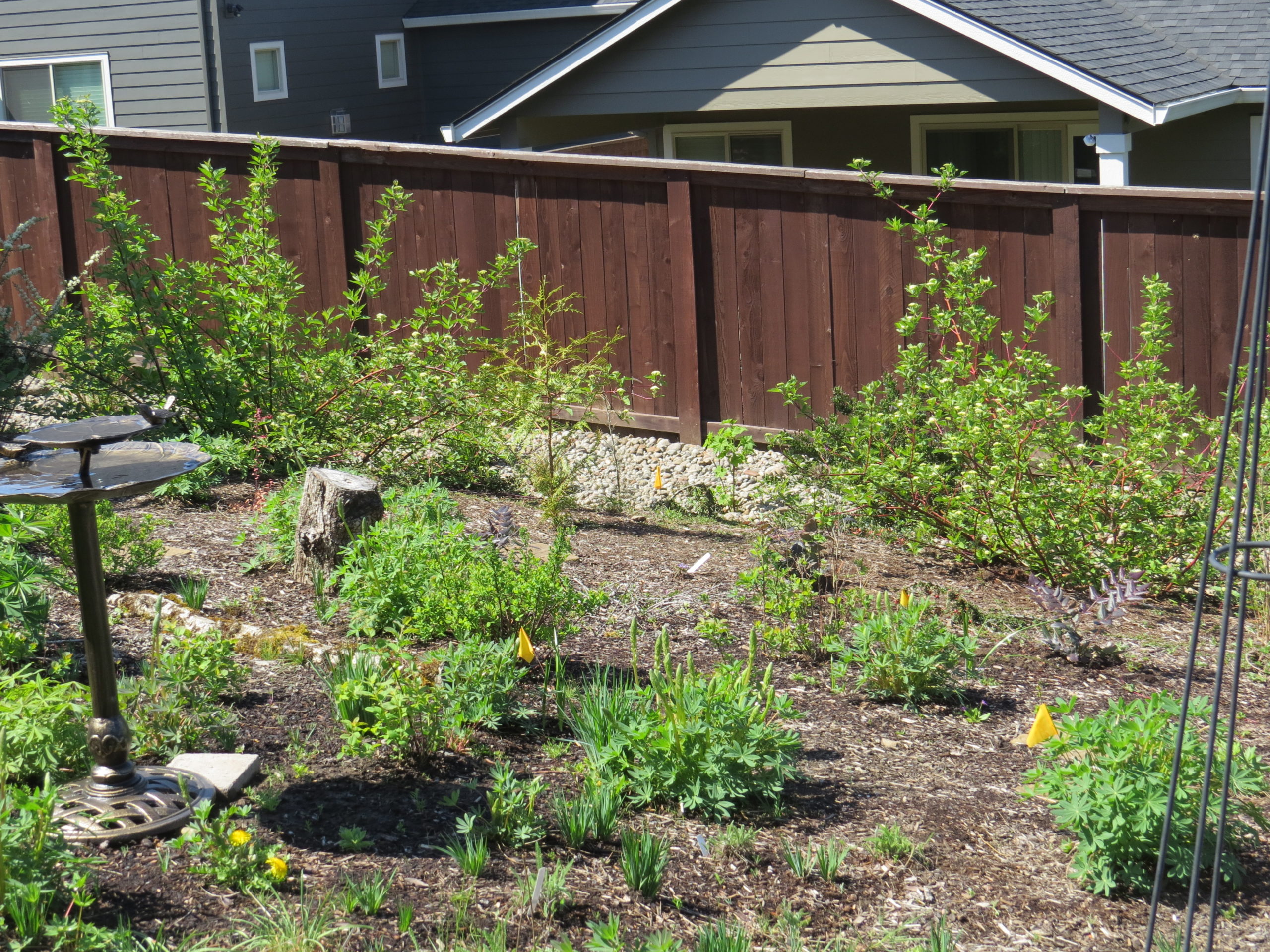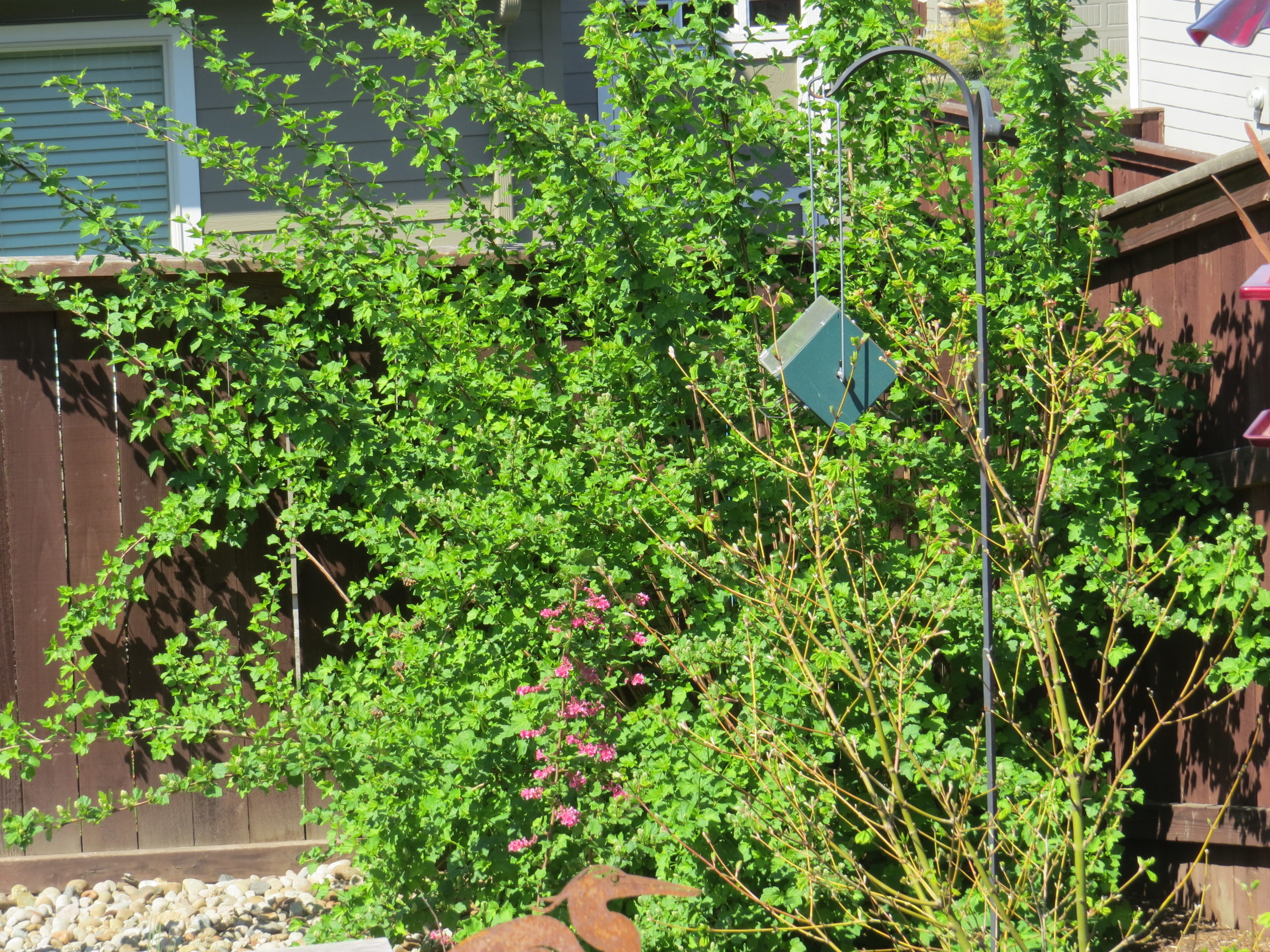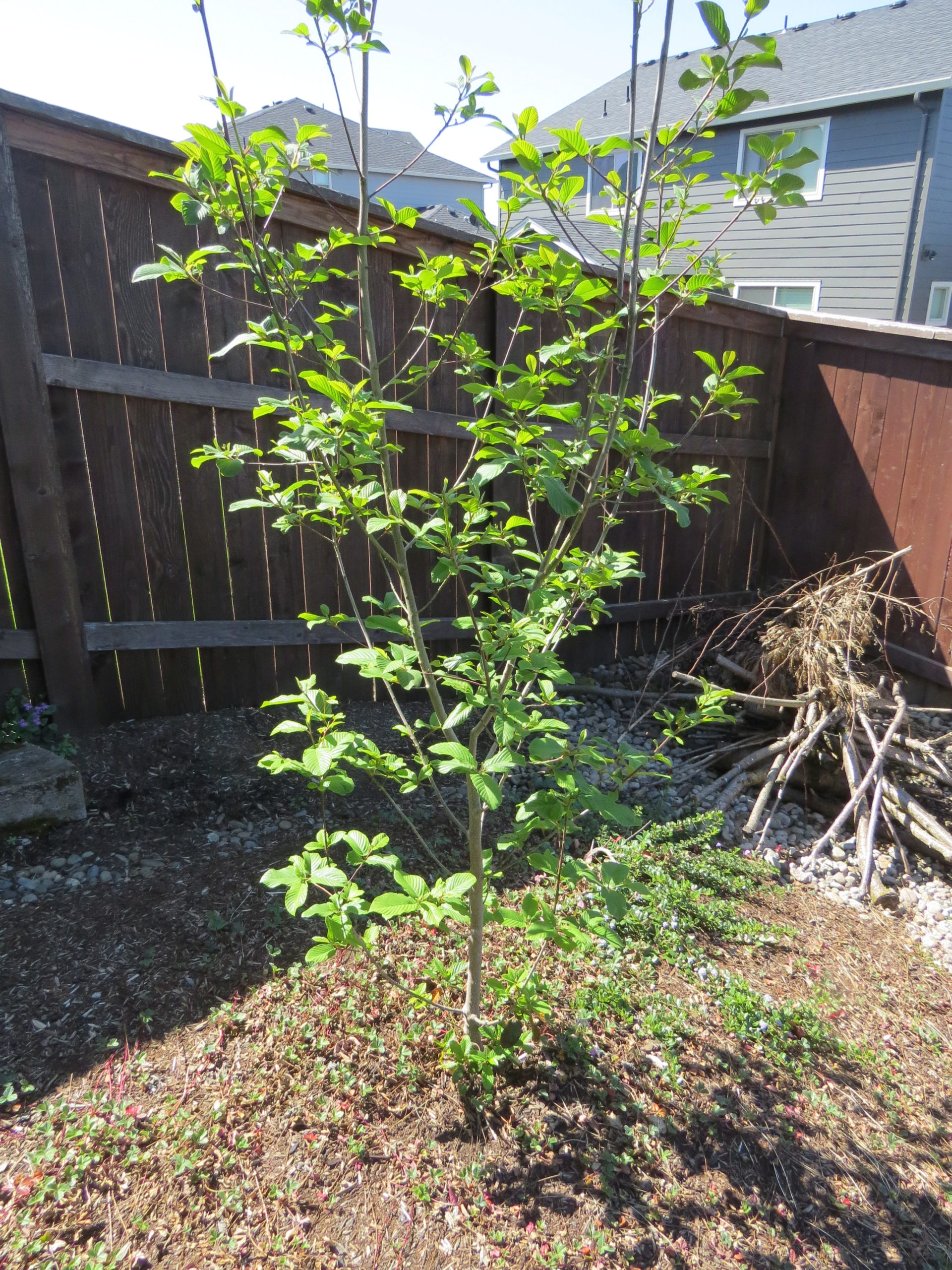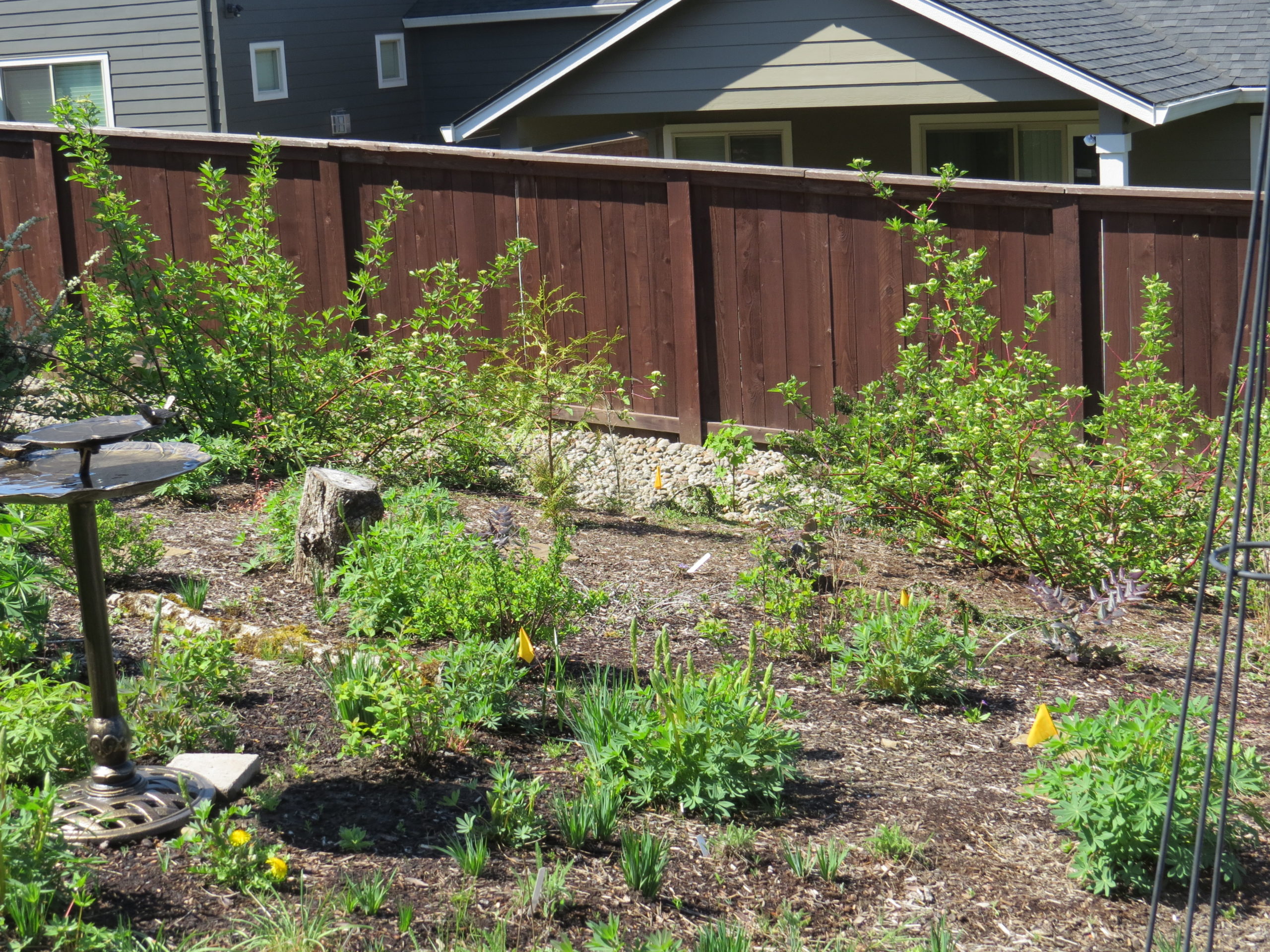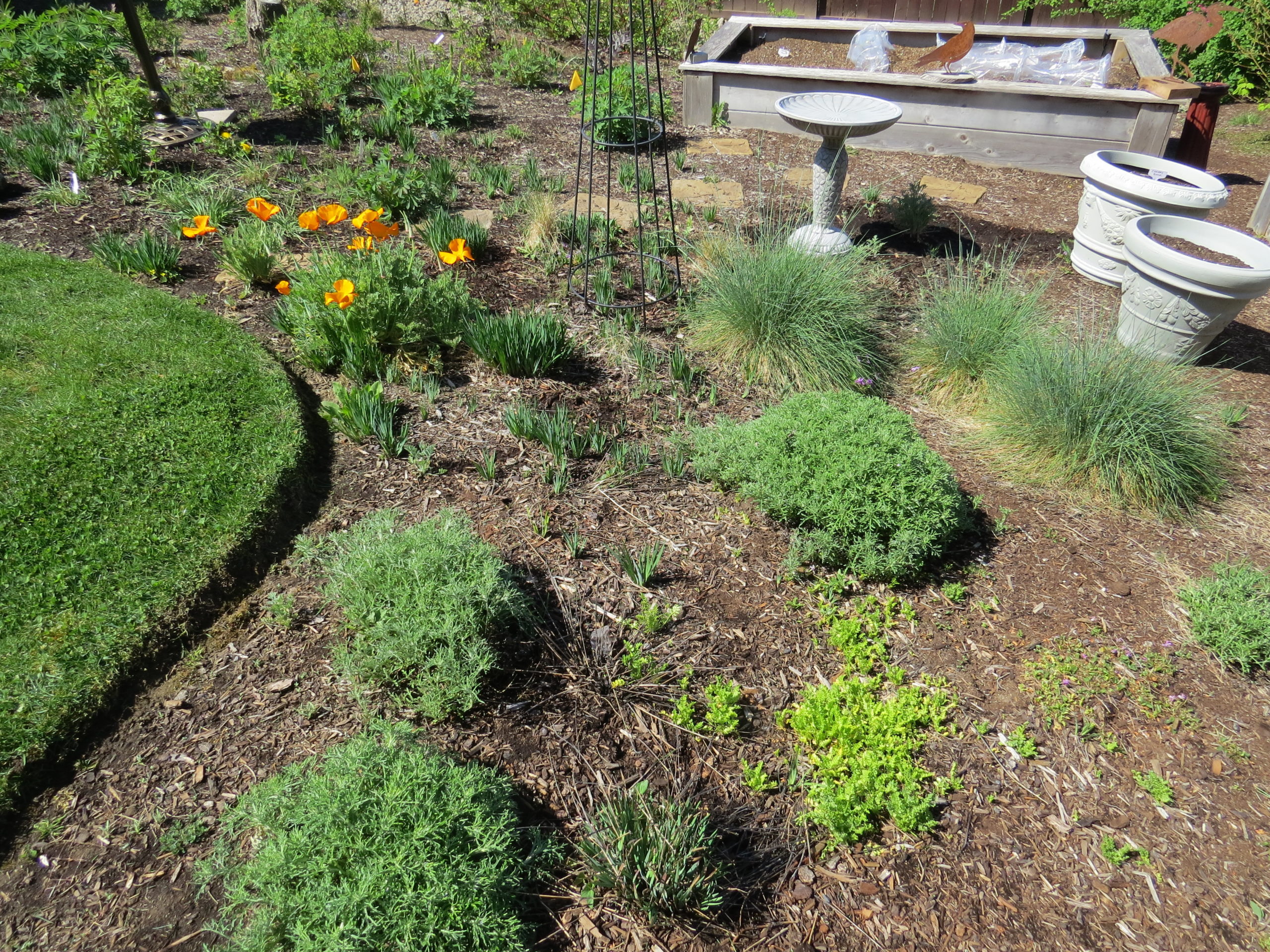Site Information: Ginnie’s habitat in Vancouver ranges from having full sun to part sun, with dry as well as wet conditions. Both a slope and bioswale are present.

What inspired you to enroll in the Backyard Habitat Certification Program?
I am a long term volunteer at the Audubon Society of Portland and have always been interested in habitat restoration in cities. I had started the certification process while living in NW Portland but moved to Vancouver in 2017 which presented a new opportunity to turn my yard into a haven for wildlife. In 2018 I started my project.
How would you describe your habitat?
I have removed all of the lawn in front and about ⅔ in back. It is a diverse habitat but mostly sunny with areas of wet and arid. I have planted 59 native species that are on the Portland Plant List. They include all 5 layers – herbaceous, small/medium shrubs, large shrubs, small trees, and large trees. I have bird houses, several water resources, window decals to avoid bird strikes, reduced outdoor lighting, established brush pile and wood snags. I have taken the Metro No Pesticide Pledge and do not use pesticides or herbicides in the yard. There is a bioswale that serves as a rain garden.
What are your top three favorite native plants and why do you love them?
That is such a hard question. I love them all. If I have to pick 3 I would choose redosier dogwood (cornus sericea) for its year-round color, berries, seeds and nectar for the bees and birds; Pacific ninebark (physocarpus capitatus) as it is thriving in my yard, the birds and bees love it for the berries, seeds and nectar and it is a super hiding place; Douglas spirea (Spirea douglasii) for the blooms, seeds and nectar for the hummingbirds and bees and it is thriving in my bioswale.
What changes have you observed as a result of creating habitat?
There are increasing numbers of birds, bees and bunnies coming to the yard. The plants seem to be thriving but have lost some (of course) to the winter. I have had one neighbor express that she wants to get started and several have asked to see the yard.
What were the two most significant challenges you encountered while creating habitat, and how did you address them?
I have had difficulty getting a canopy tree to “take”. Several have died – a madrone (I knew that would be a challenge) and three western hemlocks. I have planted a western red cedar and grew a cornus nutallii from seed that I just planted. Fingers crossed. My soil is heavy clay and it is also landfill so there may be some contamination in areas. I am constantly watching for weed creep. So far I don’t have noxious weeds but they are all around me and will become more of a challenge as time goes on. I hand weed nearly every week even in winter.
What resources did you find especially helpful?
I have found the Portland Plant List and the booklet Native Plants for Willamette Valley Yards helpful; Real Gardens Grow Natives has been helpful; the sample plans provided by the Backyard Habitat Program gave me some ideas on how to do more mass plantings; the backyard and native plant groups on Facebook provide ideas and things to watch out for; plant ID apps are also helpful (is it a weed or is it a plant). In order to keep track of plants (what they are and where they are) I have developed maps on a grid for all areas that show what is planted. I also developed an Excel sheet to list all plants by name (including scientific), whether on the Portland Plant List and where located. Friends, such as Nikki West, have allowed me to bend their ear. I also found the process for Gold Certification helpful as it provided the list of things I still had to do to obtain Platinum. Audubon Society, Watershed Council and Columbia Land Trust are all great resources.
How do you enjoy your Backyard Habitat throughout the different seasons? What are its highlights in each season?
It is just starting to fill in enough so I can sit back and enjoy it. The different color of foliage through the seasons in fantastic! I love the bright greens of spring, the flowers in early summer, the reds and golds of fall and the shapes and forms of winter along with the red twig dogwoods of course! Watching the different wildlife through the seasons is such a treat. One day it is crows and hummers. The next is it all of the above along with juncos, finches, song sparrows, bees and bunnies.
What part of your backyard habitat are you most proud of?
I am proud that I have done all of the work by myself. It started with sheet mulching the lawns. Then the plantings. I have dug every hole, planted every plant, removed every weed. I am proud that I obtained Gold Certification in two years on the first assessment. I love the animals, birds and bees that are loving the yard. I am proud to have a small sliver of natural habitat on this blue marble.
Is there anything else you’d like to add about your journey?
I am not an expert gardener and there is much to be desired about my planning. It is starting to come together though.

